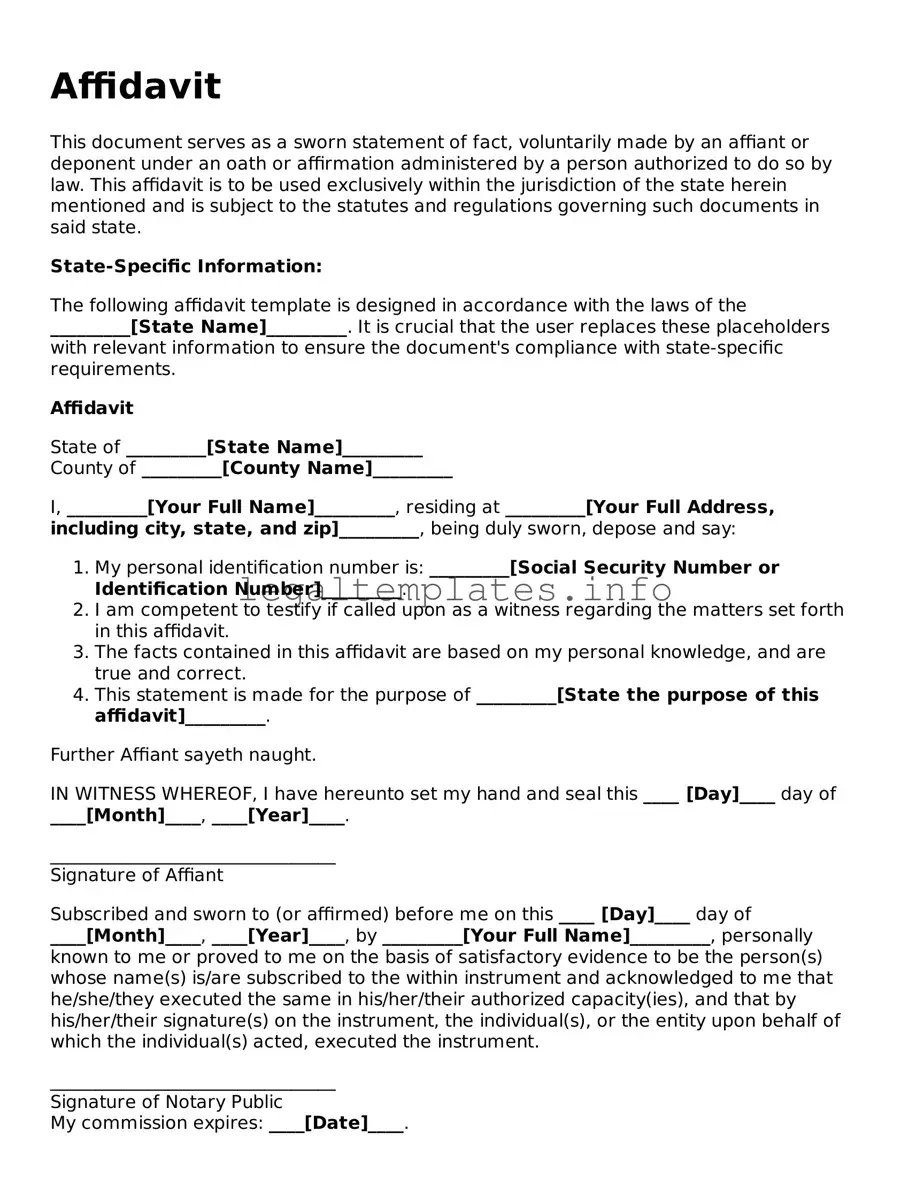Affidavit
This document serves as a sworn statement of fact, voluntarily made by an affiant or deponent under an oath or affirmation administered by a person authorized to do so by law. This affidavit is to be used exclusively within the jurisdiction of the state herein mentioned and is subject to the statutes and regulations governing such documents in said state.
State-Specific Information:
The following affidavit template is designed in accordance with the laws of the _________[State Name]_________. It is crucial that the user replaces these placeholders with relevant information to ensure the document's compliance with state-specific requirements.
Affidavit
State of _________[State Name]_________
County of _________[County Name]_________
I, _________[Your Full Name]_________, residing at _________[Your Full Address, including city, state, and zip]_________, being duly sworn, depose and say:
- My personal identification number is: _________[Social Security Number or Identification Number]_________.
- I am competent to testify if called upon as a witness regarding the matters set forth in this affidavit.
- The facts contained in this affidavit are based on my personal knowledge, and are true and correct.
- This statement is made for the purpose of _________[State the purpose of this affidavit]_________.
Further Affiant sayeth naught.
IN WITNESS WHEREOF, I have hereunto set my hand and seal this ____ [Day]____ day of ____[Month]____, ____[Year]____.
________________________________
Signature of Affiant
Subscribed and sworn to (or affirmed) before me on this ____ [Day]____ day of ____[Month]____, ____[Year]____, by _________[Your Full Name]_________, personally known to me or proved to me on the basis of satisfactory evidence to be the person(s) whose name(s) is/are subscribed to the within instrument and acknowledged to me that he/she/they executed the same in his/her/their authorized capacity(ies), and that by his/her/their signature(s) on the instrument, the individual(s), or the entity upon behalf of which the individual(s) acted, executed the instrument.
________________________________
Signature of Notary Public
My commission expires: ____[Date]____.
